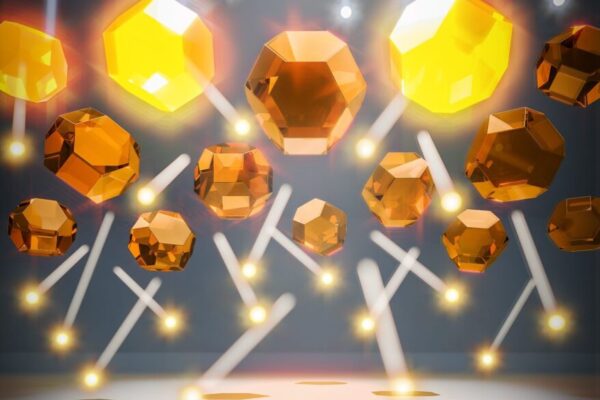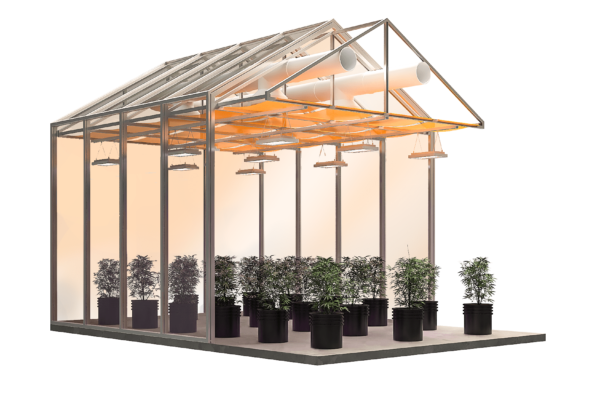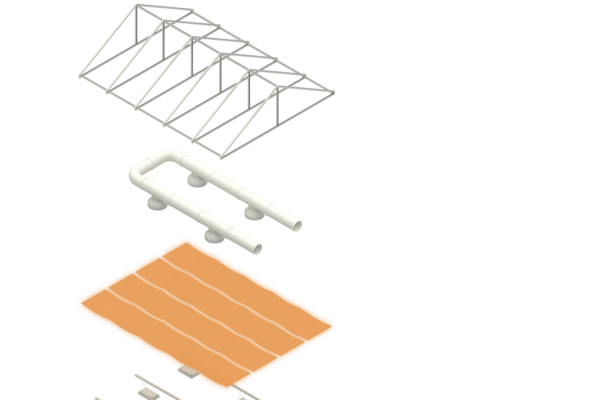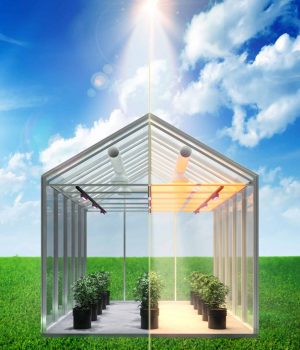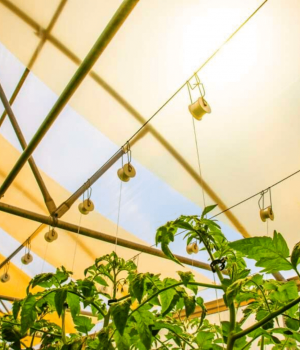Light is the most important input for crops and it’s the most capital and energy-intensive growth parameter to control. A more uniform distribution of sunlight throughout the greenhouse canopy will increase overall photosynthesis and production. Diffuse scattering of sunlight is an effective way to achieve a more uniform distribution.
Relative photosynthetic efficiency is dependent on the wavelength of light. Wavelengths between 600-650nm are the most efficient for photosynthesis. The ‘action spectrum’ illustrates the differences in relative photosynthetic efficiency by wavelength.
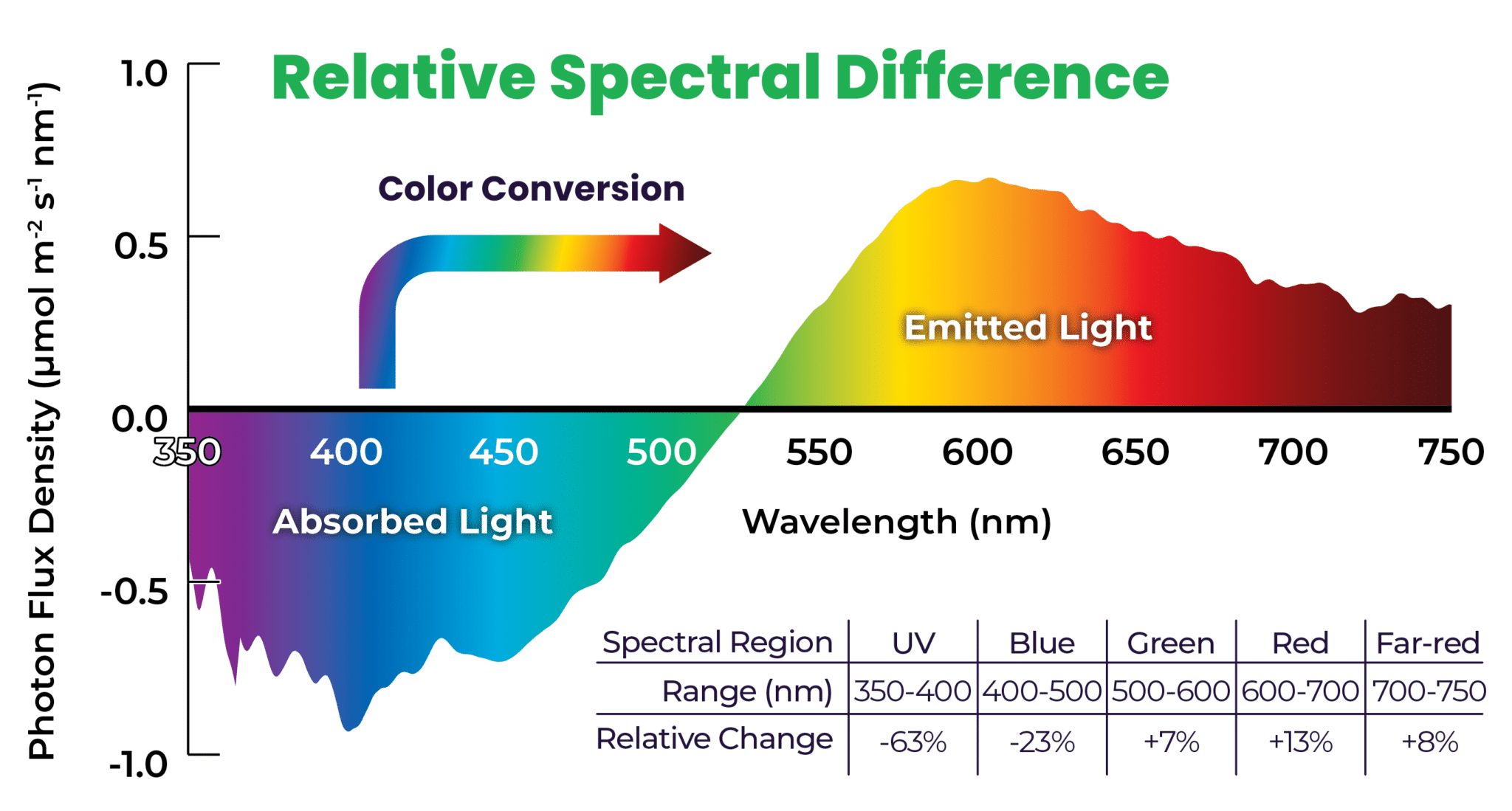
Direct light from the sun is strongly absorbed by the upper canopy leaving the lower canopy shaded. Diffused light avoids this issue: there is less shading by the upper canopy, higher light levels in the lower canopy, and the net result is better overall crop growth and plant productivity.
What is light diffusion? Simply put, it is the scattering of light.
UbiGro, a Los Alamos, New Mexico based company, has been working with cultivators to make an impact by scattering light through innovative greenhouse film products powered by nanotechnology.
UbiGro uses “Quantum dots” in their film to convert a portion of the sun’s UV and blue light into more potent orange and red light. Orange and red light is more efficiently converted into plant energy by chlorophyll versus green, blue, or UV.
By harnessing the planet’s most abundant natural resource and leveraging quantum dot technology, cultivators are seeing results that increase yields without the major costs of supplemental greenhouse lights.
Plants benefit from UbiGro’s advanced greenhouse covering materials. Growers who use UbiGro in their greenhouse experience healthier plants and gain up to a 20% boost in crop yields.
The quantum dots used by UbiGro have great diffusion properties and when sunlight passes through them these photons are not only having their wavelength changed to be more orange and red but also scattering them, making them penetrate deeper into the plant canopy to increase overall production.
Photons from the sun get scattered in all directions as they pass through the film. Much like the dimpled reflector of an HID grow light that scatters the photons of light from the bulb.
The process is called ‘photoluminescence’. Photoluminescence is when a material absorbs a certain color of light and emits or ‘glows’ a different color. Quantum dots in UbiGro film glow incredibly bright because they are so efficient at absorbing UV and blue light and emitting orange or red light.
Photons are particles of light. When a photon of UV or blue light hits a quantum dot, the light energy is absorbed, and almost immediately, a photon of a new color is emitted. Thanks to sunlight in a greenhouse, this process is occurring more than a trillion times per second in just 1ft2 of glowing UbiGro – which is why plants below UbiGro enjoy an optimized sunlight spectrum.red light, UbiGro shifts the sun’s spectrum towards the maximum photosynthetic potential in plants which in turn improves crop yields.
UbiGro glows when illuminated with sunlight. Unlike shade cloths, spray coatings or colored films that filter light, their technology converts short-wavelength photons (blue and UV) to longer wavelength photons (orange and red).
As a luminescent layer, the high-tech quantum dot technology within UbiGro empowers growers to optimize the sunlight in their greenhouse by converting excess photons of the solar spectrum while preserving colors critical for plant development.
Using versatile and customizable hardware, UbiGro can fit into any greenhouse type, size, shape, and façade material.
If you want to learn more about enhancing the quality of light in your greenhouse with UbiGrow film products, contact us.



